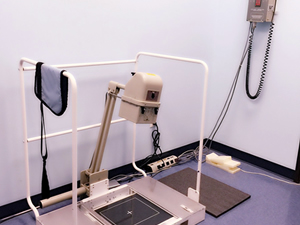
 Digital radiography is a form of X-ray imaging, where digital X-ray sensors are used instead of traditional photographic film. Advantages include time efficiency through bypassing chemical processing and the ability to digitally transfer and enhance images.
Digital radiography is a form of X-ray imaging, where digital X-ray sensors are used instead of traditional photographic film. Advantages include time efficiency through bypassing chemical processing and the ability to digitally transfer and enhance images.
Digital radiology may represent the greatest technological advancement in medical imaging over the last decade. The use of radiographic films in x ray imaging might become obsolete in a few years. An appropriate analogy that is easy to understand is the replacement of typical film cameras with digital cameras. Images can be immediately acquired, deleted, modified, and subsequently sent to a network of computers.
Digital radiography is one of the most important new advances that our profession has seen in quite some time. The capability to reduce the exposure of radiation to the patient while increasing our diagnostic proficiency has astounding implications. The reduction of the use of harsh chemicals and other waste materials associated with traditional radiography is also an added benefit to our environment.
Unlike film, digital X-ray images can be enhanced to assist in making a precise diagnosis. Images can be magnified, sharpened, colorized, or displayed as a negative. These software-controlled enhancements optimize the image but do not alter the data - you can always "go back" to view the original image. Digital tools such as these are built right into the software that drives the digital radiography system. The X-rays are stored in the patient's digital file, and can be brought up and viewed instantly at a later date.
Copyright © Southwestern Foot and Ankle Associates, P.C. | Site Map | Nondiscimination | Design by: Podiatry Content Connection